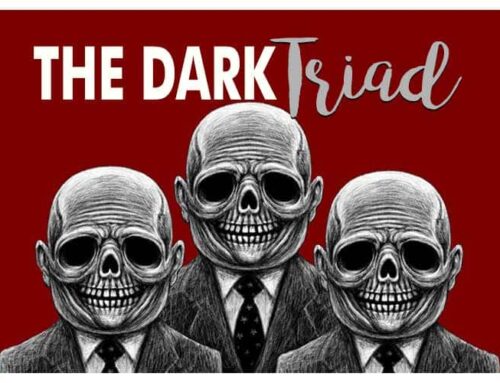“The borrower is servant to the lender.”-The Bible
As America convulses in the clutches of manipulated, and off times, misrepresented statistics about a low unemployment rate, another more troubling shift has been occurring in the dark chasms of American society.
It is an old beast with a new face and a familiar appetite: debt.
The 1865 passage of the 13th Amendment granted former slaves their freedom with the exception of those convicted for crimes and incarcerated by the states. This exception ran parallel with another form of detention prevalent among whites suffering from chronic cases of poverty; the institution of Debtor’s Prison.
Debtors Prison was an American institution spanning back to the middle ages in Europe. These prisons incarcerated individuals for debts owed to their creditors.
buy intagra online https://apwh.org/wp-content/languages/en/intagra.html no prescription
They remained incarcerated until their debts were paid in full. They were outlawed in the United States in 1831 when the Supreme Court held them to be unconstitutional.
But an interesting phenomena developed after the emancipation and reconstruction periods in the country. As blacks lost both land and power due to the re-institution of a racial caste system akin to slavery, the same practices outlawed by the Supreme Court were legalized under the exception in the 13th Amendment. The criminalization of debt became a lucrative new enterprise.
Concurrently, states drafted vagrancy laws which criminalized black un-employment; sweeping them back into the custody of the state. This incarceration was followed up by Convict Leasing Agreements where local governments sold low cost black labor to private white companies for profit.
Many people were comfortable with the believe that such tactics were limited to the incarcerated black felon, they were mistaken only in the belief that these practices were confined to the prison walls.
While blacks on the inside of prison walls were relegated to hard labor for the state, millions of blacks on the outside, throughout the American South, were imprisoned in an airtight cage of agrarian feudalism known as sharecropping.
This state of debt peonage required black farm workers to work on cotton plantations for white landowners for wages that amounted to little more than their incarcerated brethren, The job required them to obtain sacks, clothing and other supplies needed to work the fields. With no money, black workers had to purchase these items on credit from a local country store usually owned by the landowner.
When the worker received his wages for the yields picked, he was required to pay the store owner for the supplies. The wages were controlled by the landowner who often cheated the laborers by undercutting the amount owed to them for the cotton yields. Thus, the laborers could never pay the store owner and remained in debt to the landowner. This form of loan sharking was always enforced by the local police department through violence, death or, you guessed it: incarceration.
Expropriation of black wealth is not exclusively a southern enterprise. In the North, black wealth was often stolen through usurious predatory lending schemes. These took the form of seller controlled home owner contracts (Read Black Wealth/White Theft)
It is tempting to believe that these practices are a relic of the past. But this temptation has some very shocking realities for its believers. Even after the revelations of the repugnant lending practices of the Sub-Prime Mortgage Crisis of 2007, blacks remain the most vulnerable casualties of predatory lending practices.
buy synthroid online https://apwh.org/wp-content/languages/en/synthroid.html no prescription
Take the case of Patricia Blair. Blair moved into her home with her husband in 1964. At the time, she was of age to be legally married but not old enough to enter into a lending agreement. Later in life, after raising their children in their home, she and her husband took out a reverse mortgage.
“A reverse mortgage is a mortgage that allows an elderly person to convert the equity in their home into disposable cash to be repaid with interest when the borrower dies, moves or sells the home.”
When Blair’s husband died, for some reason that still remains unclear, the Bank refused to allow Blair to assume the debt and pay off the mortgage. Faced with not only the loss of valuable equity in the home, Blair is also faced with homelessness. As of the date of this article, it is unknown whether or not Blair is still in the home where she lived for decades with her late husband and children.
buy finasteride online https://apwh.org/wp-content/languages/en/finasteride.html no prescription
It should be noted that while these debts can be discharged in Bankruptcy Court, the home generally cannot be saved. The sad irony is that these mortgages render an entire generation of baby boomers and their Generation X offspring, impoverished and homeless even as they are in the midst of record low unemployment.
These smash and grab operations have looted the black community of between 72 to 93 billion dollars according to an article written by the Atlanta Black Star.
America’s consistent habit of expropriating black wealth is the dark underbelly of the economy—–A kind of bastard child that everyone whispers about but treats as though he were mentally challenged. Apologists or deniers of these practices like to say that its not about color. They claim that the only color that predatory lenders see is green.
buy aciphex online https://blackmenheal.org/wp-content/languages/new/uk/aciphex.html no prescription
Apparently, they are completely colorblind to the staggering numbers of black people living in the red.
TONY MACEO is a Senior Blogger at the Negromanosphere. Support on Paypal @wayofstrategy44@gmail.com or on Patreon at Power of Strategies. TILL NEXT TIME I’ll HOLLA!



Leave A Comment